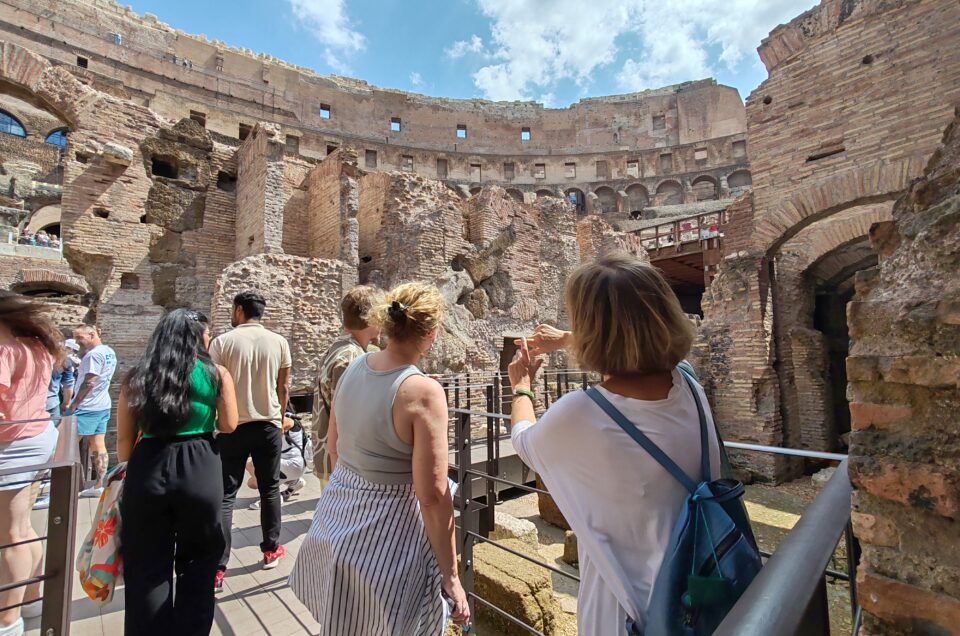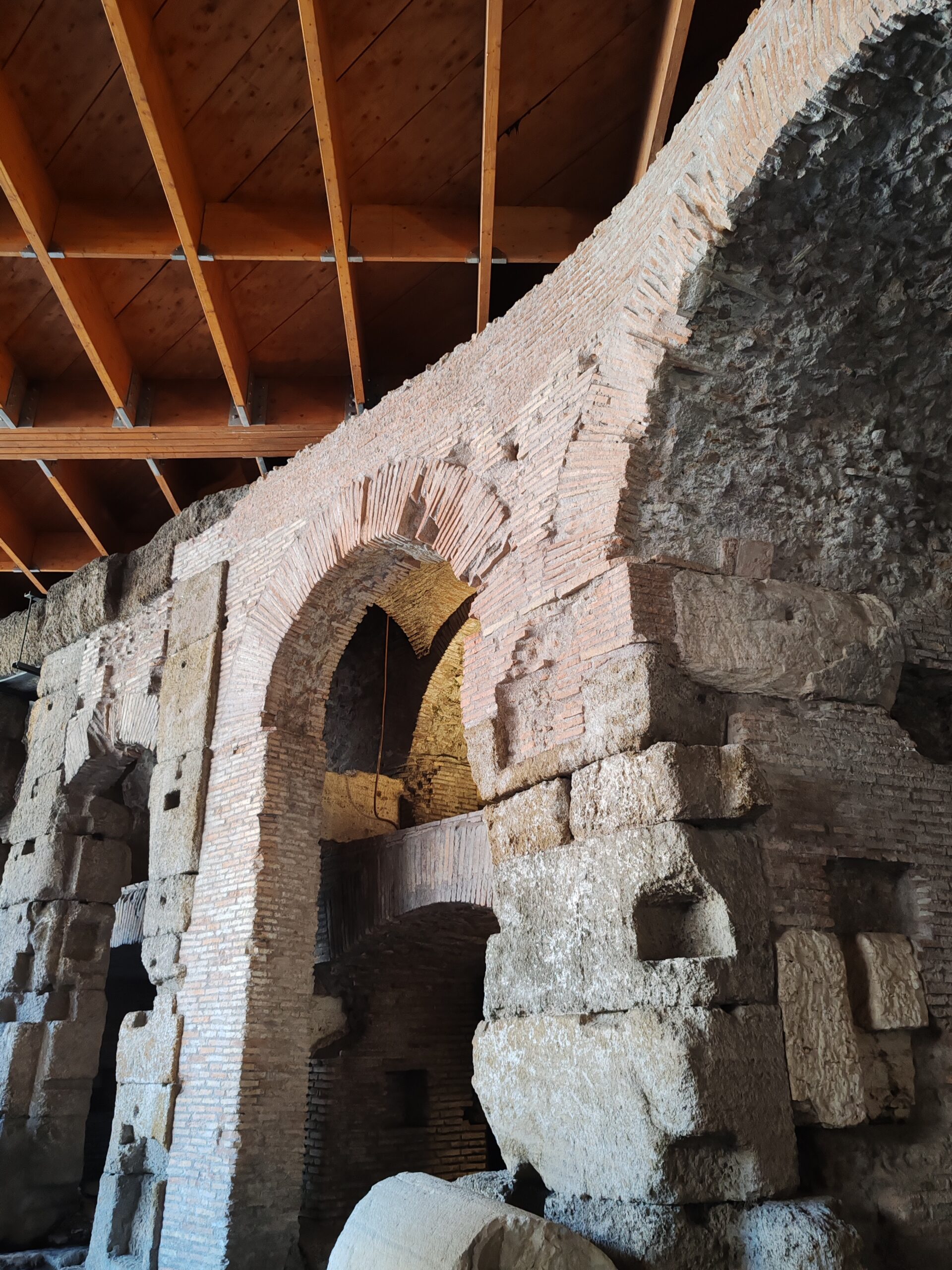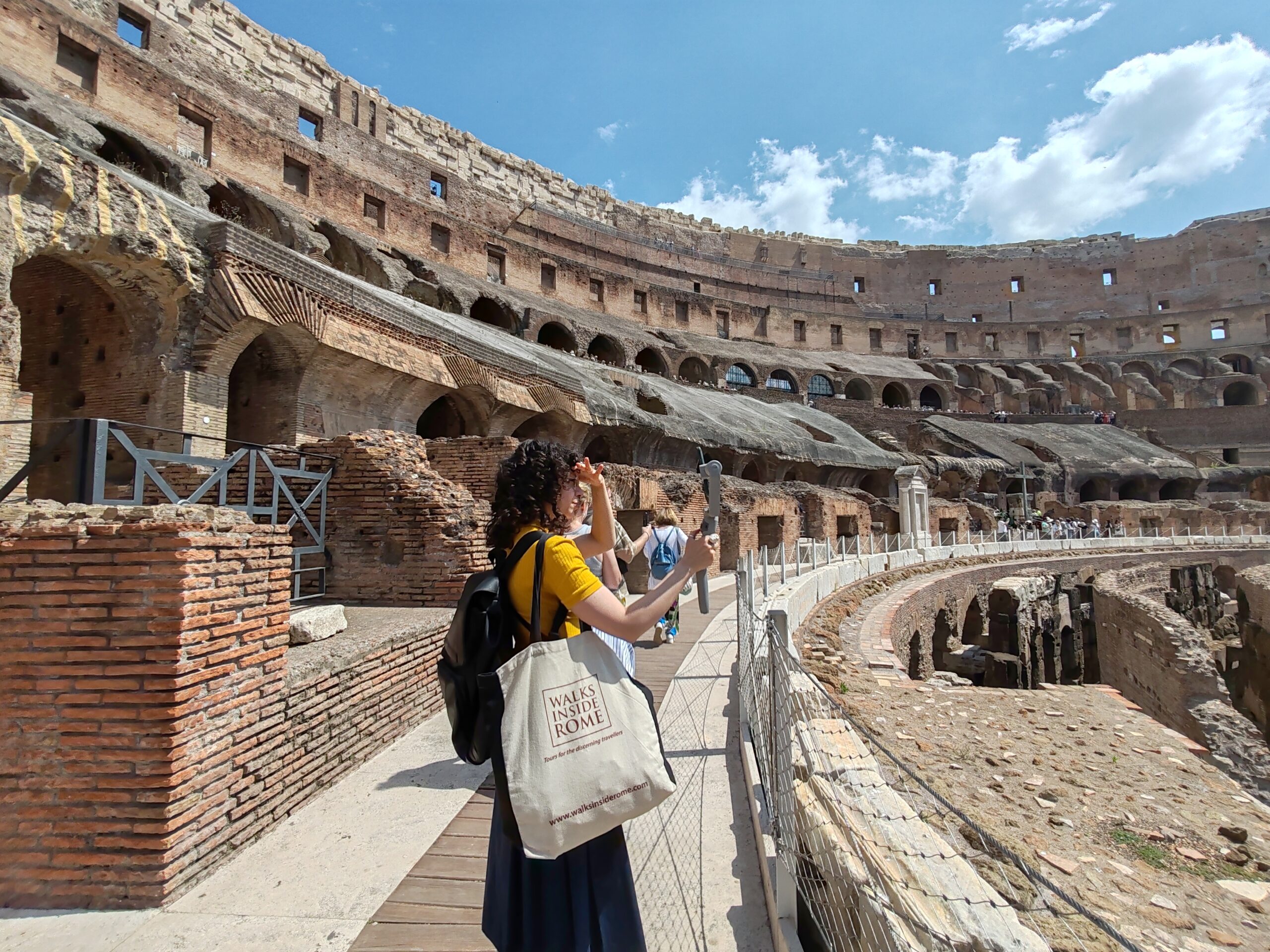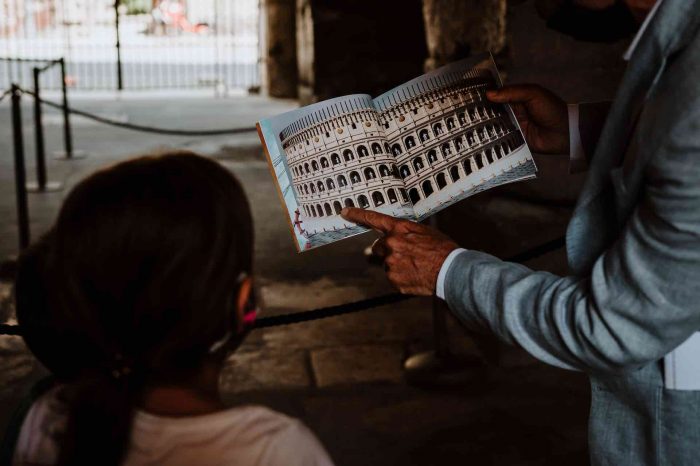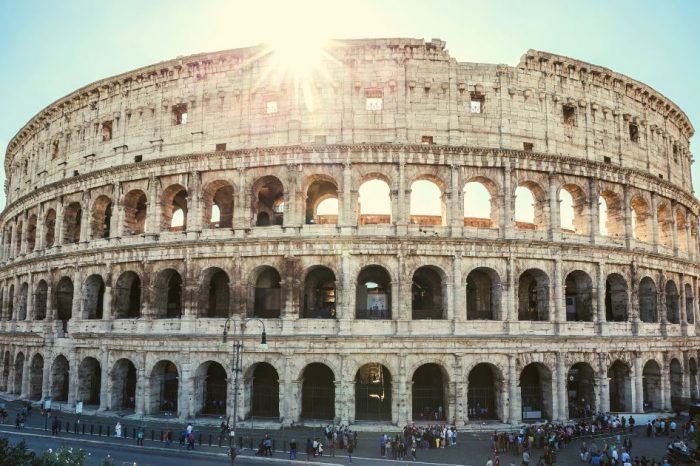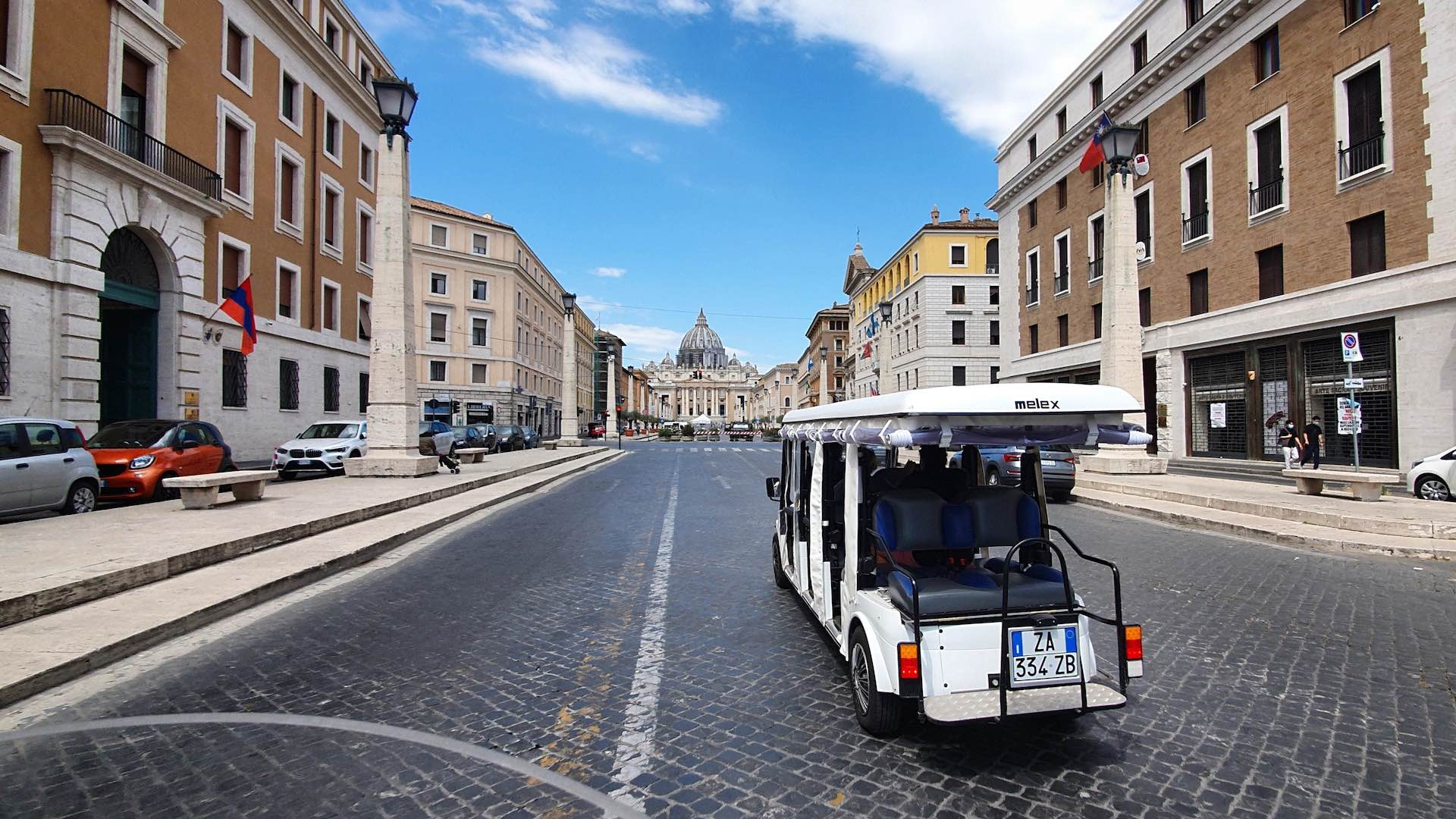You probably already know that the Roman Colosseum is one of the wonders of the ancient world and a must-see attraction in Rome.
You may be familiar with the facade of the Colosseum today- it has a looming oval shape, is made up of limestone columns and has rows and rows of magnificent arched entrances. But do you know what the Colosseum looks like from the inside?
This article covers the interiors of the grand Flavian Amphitheater, so you know what to expect from your visit to it!
Colosseum interior
How did the Colosseum look like?
The monumental size of the Colosseum’s exterior makes perfect sense once you step inside it- you suddenly find yourself eyeing a tremendous ‘playing ground’. Even amongst the ruins you are able to see a semblance of what was once a stadium with an arena floor for a spectacle of activities, and four rows of rising stands for a once eager, explosive spectating audience.
The arena
Everything that happened inside the Roman Colosseum and on the arena floor creates a melting pot for understanding ‘all things Roman’ during the height of the empire. This is why the Colosseum is studied and talked about as a mighty monument as much as it is- the historical significance it provides is hefty.
A socio-political hierarchy was demonstrated through the study of who becomes a gladiator on the arena floor.
The brutality depicted on this floor shows how violence was glorified, and how the power of the Roman empire was shown through battles and conquers.
The Roman values of courageousness and grit were exemplified through these gladiatorial fights.
Today you can see a reconstructed version of part of the arena floor at the Colosseum, exposing much of the amphitheater’s underground.
The underground areas
The underground of the Colosseum is called the Hypogeum. This architectural aspect of the Colosseum was pivotal for conducting all of the activities of the arena floor.
It held the cages for the animals, dressing rooms for the gladiators, storage spaces for all props and had levies and special elevators for surprise entrances onto the stadium. You can now only see the ruins of the hypogeum that depict the walls and passageways in what seems to be a maze.
The underground of the Colosseum is what makes the ‘show business’ of the amphitheatre come to life.
The upper galleries
The galleries that held the spectators reveal a lot about the socio-political dimensions of ancient Rome. They indicate where different characters and social classes had allocated seating within the audience.
The galleries go up to four floors and provide a brilliant panoramic view of the inside of the Colosseum.
How did the Colosseum look like?
Did you know that the exterior of the Colosseum was not as we view it now? In present day we see the structure made of exposed limestone material, but during the height of the Roman empire it used to be covered in marble!
The interior of the Colosseum looked different too- there were a lot of design elements that have been lost over time.
- A full arena floor made up of wood and covered with sand would hide the hypogeum underneath.
- The seats closest to the arena floor-on the first tier- were covered with marble and sometimes had the names of emperors and other important officials inscribed on them.
- The seats in the attic were less fancy and were made of wood.
- There was a retractable awning called the Velarium on top of the Colosseum, providing shade for all the spectators. No, the Colosseum was not always meant to be an open-air theatre!
- Statues and sculptures of emperors, god and mythological creatures decorated the Colosseum. It would be quite uncharacteristic of the Roman’s to not decorate one of their most prized and celebrated monuments!
Rome Colosseum before and after
The Colosseum now looks very different from what it used to be like in its prime.
Immense restoration efforts over the year however, have kept it maintained at its mighty scale and have made it possible to visit the interiors of the ancient amphitheatre.
What features of the Colosseum have survived?
The structures of the hypogeum and the stands.
What features of the Colosseum have been lost?
The decoration, the surface materials, the historical markings and the original arena floor.
What has caused the changes in the Colosseum’s appearance?
- As the Roman empire took its descent the Colosseum started being subject to neglect.
- A series of earthquakes brought significant havoc to the monument.
- The Colosseum was quarried for building materials to be used in other projects.
- Natural wear and tear over almost two millennia have shown their results.
What to see at the Colosseum in Rome
There is lot to see at the Roman Colosseum! Each section of the amphitheatre has its own set of unique artifacts and architectural structures to learn about. Whilst you can see the iron and wood remains of animal cages in the hypogeum, you can also visit the emperor’s box in the lowest stands and the Gate of Death on the edges of arena, from where the bodies of defeated gladiators would be dragged off the floor.
There are also many virtual reconstructions of the Colosseum installed within the premises as well, in order to further bring the former glory of the Colosseum to life!
Things to do at the Colosseum
- Indulge in many panoramic photo opportunities from different vantage points of the Colosseum! These can be within the underbelly of the amphitheatre or from one of the four tiers of stands. The higher up you go, the more expansive your viewpoint will be!
- Check out one of the periodical exhibitions on the Colosseum put together by the Colosseum Archaeological Park.
- Choose a guided, interactive experience of the Colosseum, curated with great attention to detail by a tour operator like ours. For example, you could choose a discovery of ancient Roman monuments- including the Roman Forum and the Colosseum- through a tour that caters to children and families.
- Don’t forget to visit other nearby sites such as the Palatine Hill and the Roman Forum!
Conclusion
Visiting the Colosseum vividly colours any visit to Rome with the life and times of the magnificent yet harsh Roman empire.
We urge you to plan ahead, buy tickets to the site earlier than later and choose to opt for skip-the-line tickets, which accompany every guided tour that Walks Inside Rome offers.
Happy exploring!

